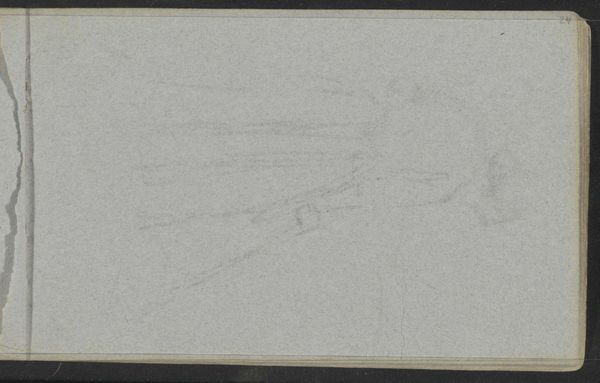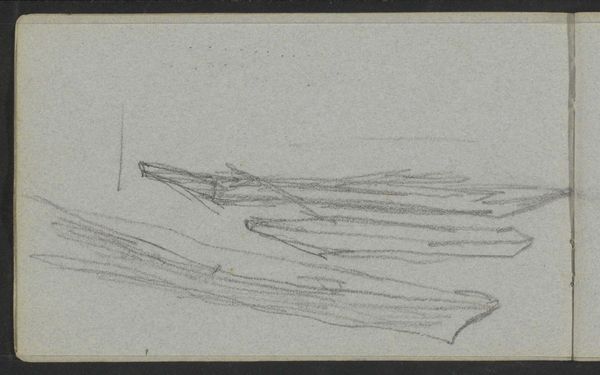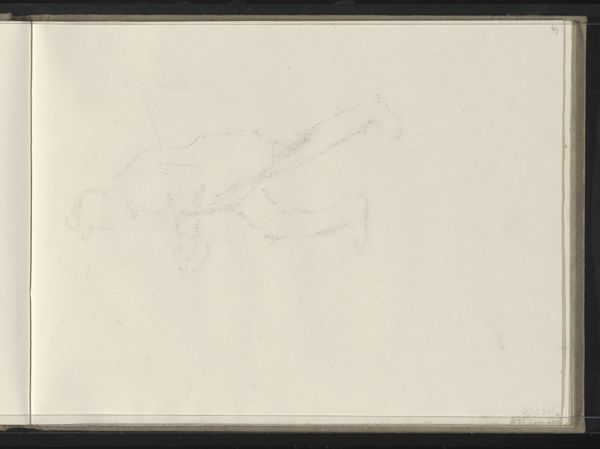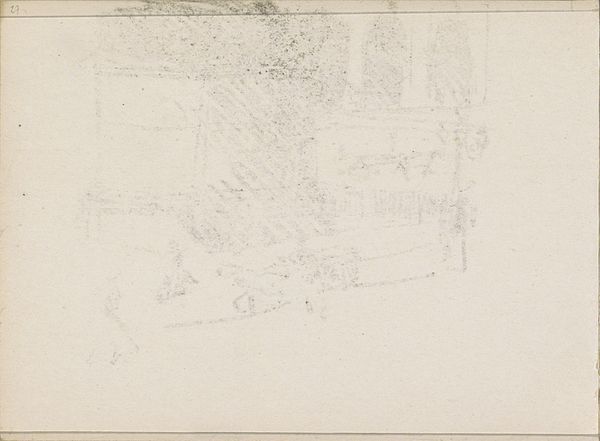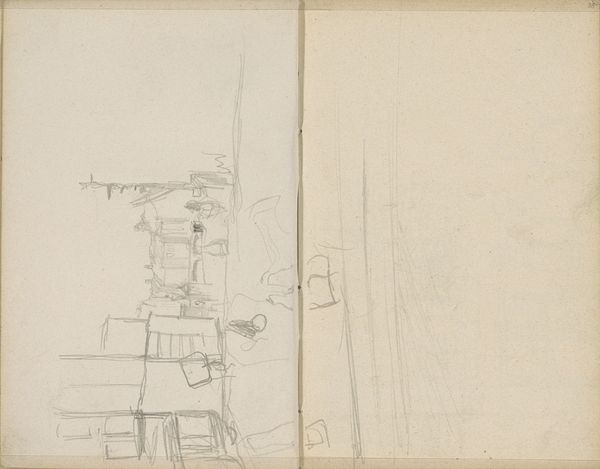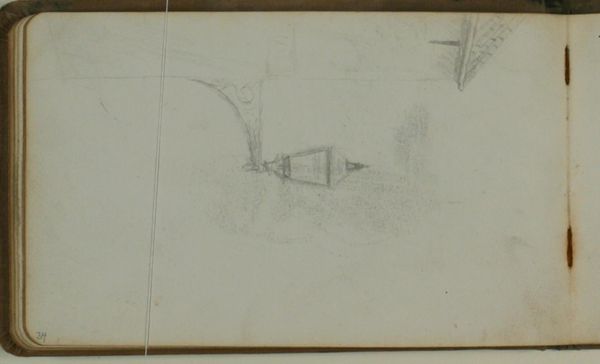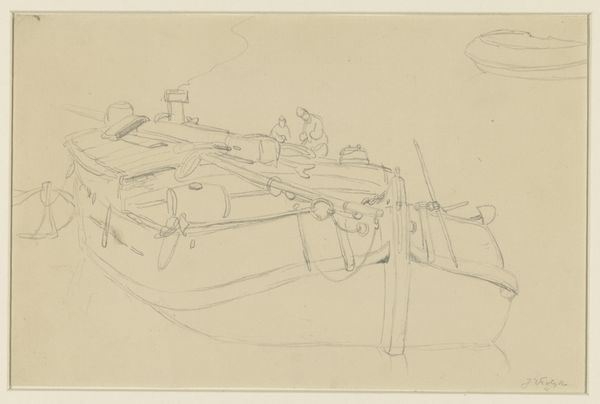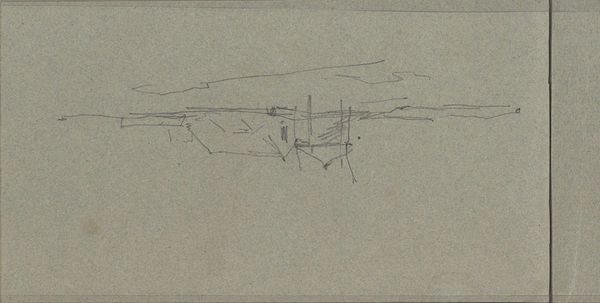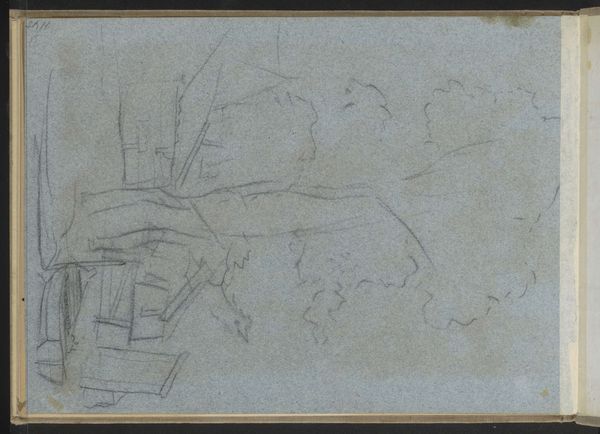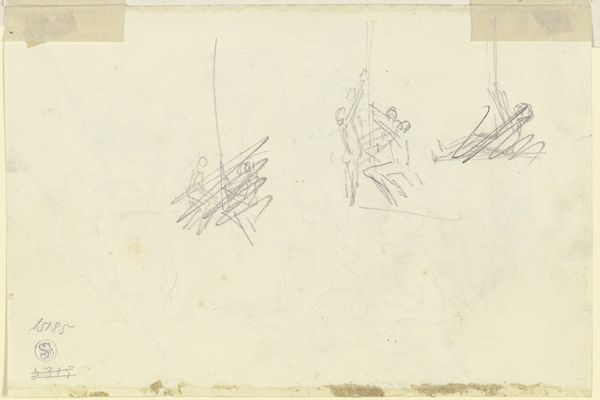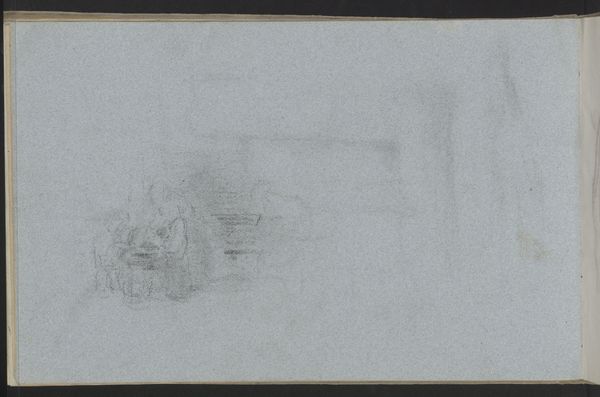
drawing, paper, pencil
#
drawing
#
aged paper
#
homemade paper
#
sketch book
#
incomplete sketchy
#
hand drawn type
#
landscape
#
paper
#
personal sketchbook
#
pencil
#
line
#
sketchbook drawing
#
storyboard and sketchbook work
#
sketchbook art
#
design on paper
Copyright: Rijks Museum: Open Domain
Curator: Here we have a drawing titled "Studie," dating roughly from 1849 to 1917, by Matthijs Maris. It resides here in the Rijksmuseum. Editor: My initial feeling is one of quiet observation. It's an extremely understated landscape, isn't it? The pencil work is so subtle, almost like a whisper on the page. Curator: Indeed. Maris was part of the Hague School, a group that championed realism and capturing the Dutch landscape and life as it truly was. Drawings like these gave him an opportunity to examine his subjects. Editor: I'm immediately drawn to the aged paper itself. The drawing appears to be part of a sketchbook, perhaps even homemade paper? It’s crucial; it gives the work a sense of intimacy, a glimpse into the artist's process. It speaks to the labor inherent in the artistic practice. Curator: Precisely. The context of sketchbooks—private, preparatory, and sometimes presented as final works—is significant. Sketchbooks allow us access to the artist's development. But, of course, it raises questions about intention and reception: Was Maris consciously creating "art" for eventual display, or were these simply working documents? Editor: I see it more as the foundation, the groundwork of his practice. It’s like looking at the raw materials before they're transformed. Even the "incomplete sketchy" nature of the drawing, its hand-drawn quality, reveals his artistic method. How the landscape takes shape in pencil. Curator: His choice of landscape is revealing, placing art in relation to both social and natural processes. While simple, these images allowed artists to contemplate questions around natural and man-made power. The location, too, has an affect, it could just as easily been executed on site, or drafted and constructed later. Editor: Right, how do we value these kinds of more "pedestrian" art objects, drawings that expose process? The sketch is both document and creation. Maris, in turn, is positioned more so as a producer and less as simply a “romantic visionary”. Curator: Thinking about Maris, reflecting on this piece—makes one consider the changing values attached to different artistic practices, styles and movements over time. What we exhibit, preserve, and celebrate says as much about our present values as about the past. Editor: Agreed. It calls into question how art is consumed, perceived and created at large. Ultimately, what matters is the careful observation and consideration.
Comments
No comments
Be the first to comment and join the conversation on the ultimate creative platform.
